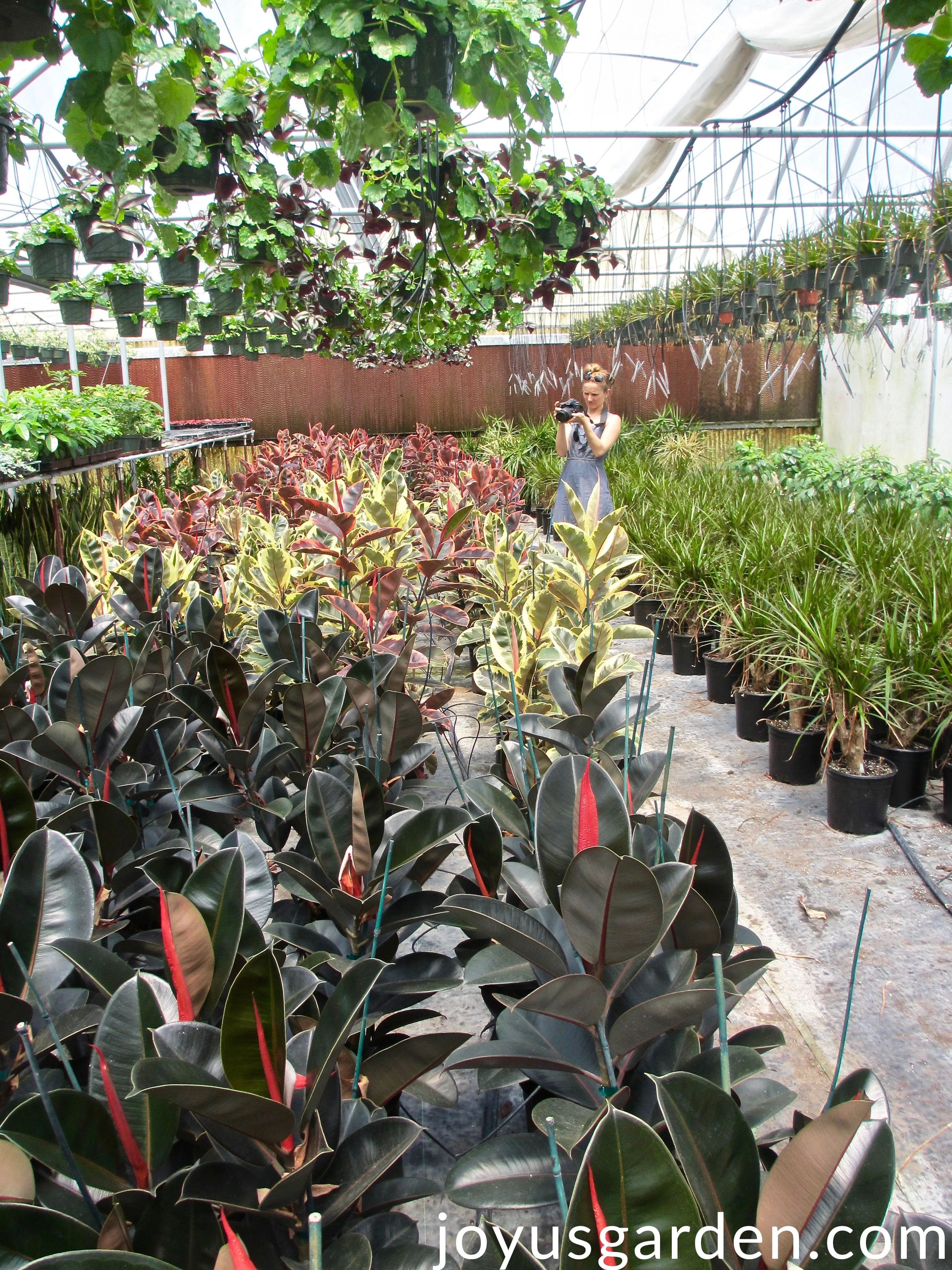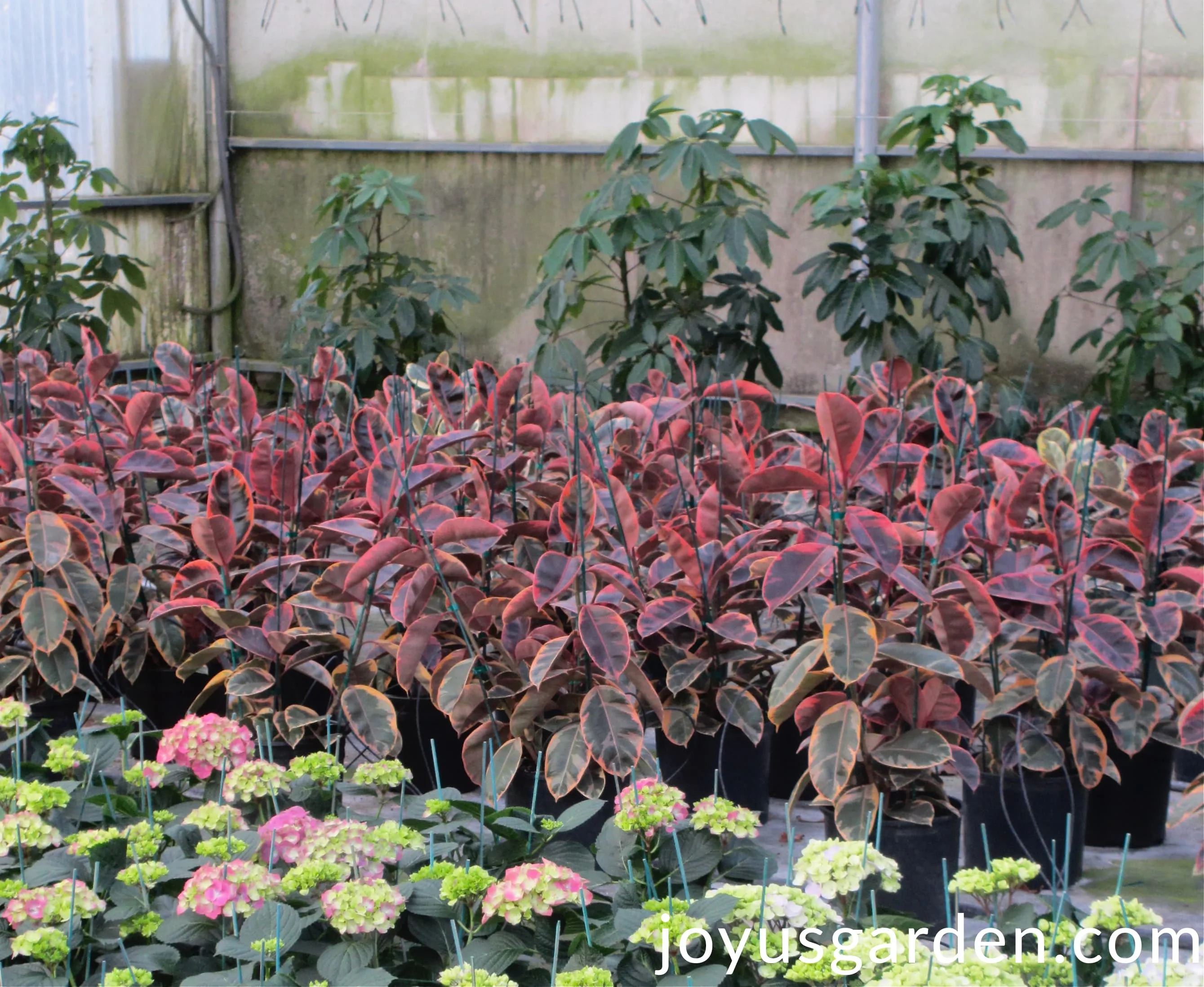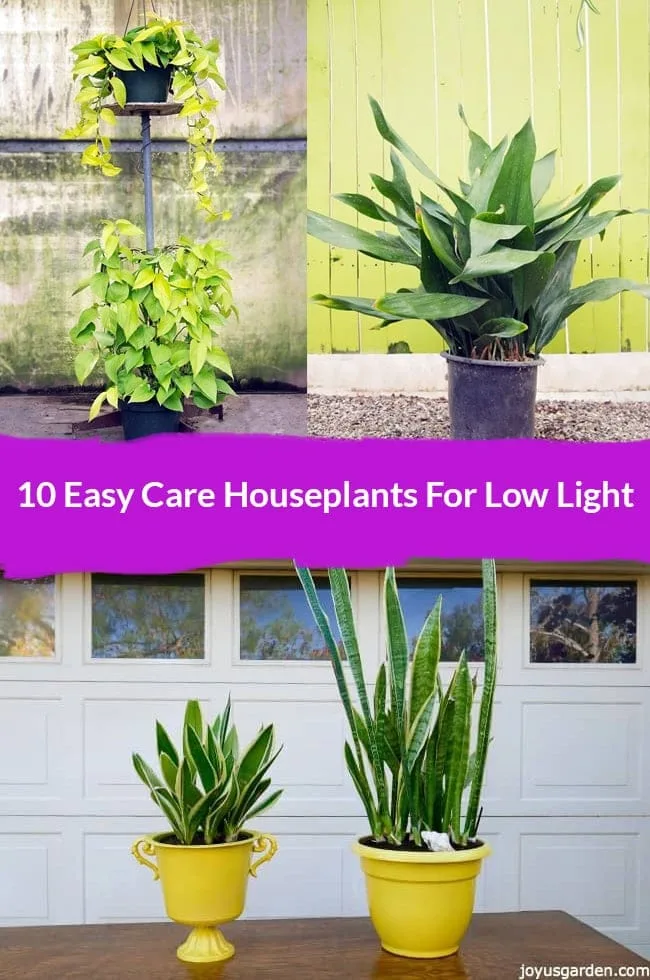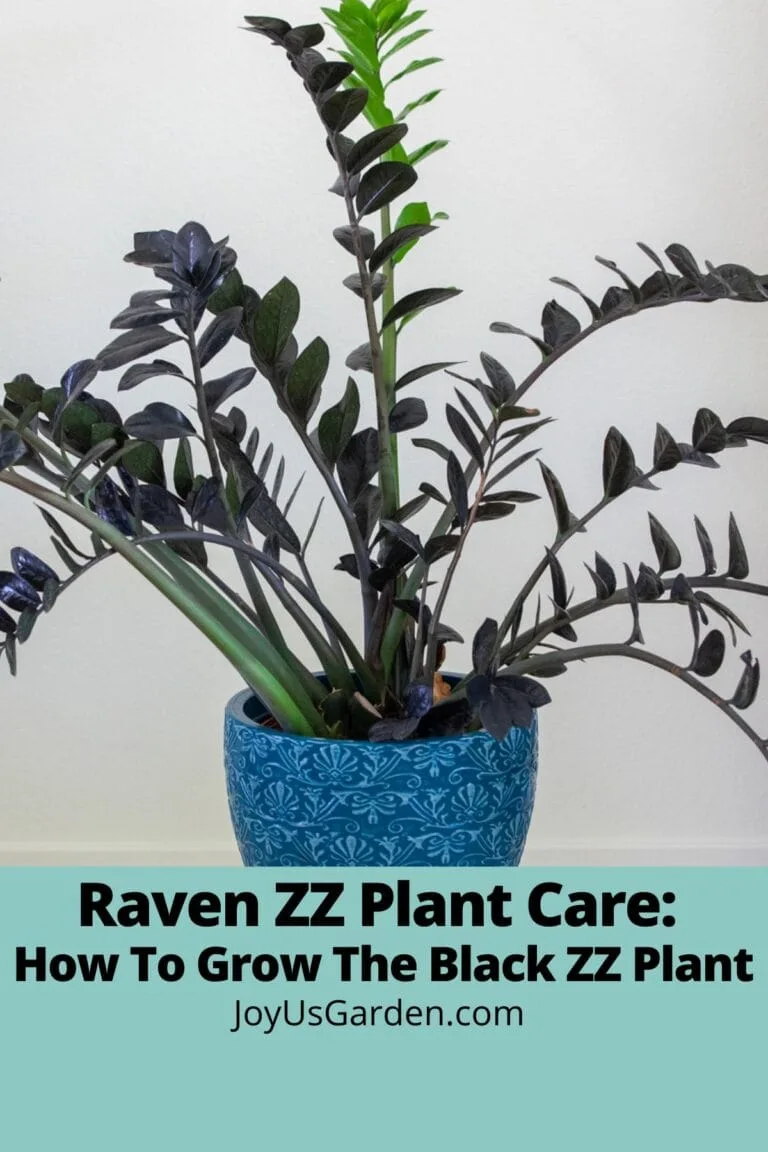Rubber Plant Care: A Ficus Elastica Growing Guide
Want an easy-care indoor tree with large, deep green, glossy leaves? Here it is. These Rubber Plant care and growing tips will keep yours looking great.
After spending a few years in the interiorscaping biz, I found the Rubber Plant to be the easiest of the Ficus trifecta (including the Fiddleaf and Weeping Fig) to maintain and keep alive. It’s been slightly pushed aside, and I think now’s the time for the Ficus elastica to get the attention it deserves.
The Ficus benjamina, or Weeping Fig, drops leaves like it’s fall every day. The Ficus lyrata, or Fiddleleaf Fig, is revered in the groovy design world, but we know many find it challenging to grow. I’ve found that both of these ficus plants do best in higher light conditions and are much more temperamental than the Rubber Plant. They don’t like sudden changes in environment or care.
So, the Rubber Plant may be the one for you!
Botanic name: Ficus elastica Common name: Rubber Plant, Rubber Tree, Rubber Tree Plant, Rubber Fig
Rubber Plant Traits

Rubber Plant Varieties
You have a choice of varieties in foliage color when it comes to the Ficus elastica if plain green isn’t your thing. Popular varieties include decora (one of mine), robusta, ruby, Tineke (my other one), burgundy, and black prince.
Size
Rubber Plants are usually sold as floor plants. I bought mine in a 10″ nursery pot that stood 5′ tall. I repotted it into a 16″ pot a few years ago. As I update this post, it now stands 11′ from the ground (pictured above).
Growing in their native environments, Ficus elasticas can get 60-80′ tall. Yes, they’re a large tree! The largest I’ve seen one growing indoors was around 20′ in an atrium.
They’re commonly sold in 6, 8, 10, and 14″ pot sizes.
Growth Rate
When in the desired exposure and getting the care they like, Rubber Plant growth rate is moderate to fast. This is especially true in late spring and summer when houseplants do the majority of their growing.
Rubber Trees are a great value. These plants are inexpensive because they’re easy to propagate and grow fast.
Uses
This plant is most commonly seen as a floor plant.
Staking
As a Rubber Plant grows tall, it’ll need staking. When mine reached 8′, I hammered in 3-6′ thick bamboo stakes to help each stem grow more upright. This plant takes up enough room as it is!

Rubber Plant Care Indoors
Rubber Plant Light Requirements
The Rubber Tree is a medium to high-light indoor plant. Keep yours out of direct, hot sun (in a west or south-facing window) because the leaves could burn up against the hot glass, especially in summer.
Mine grows in my bright kitchen in sunny Tucson, AZ. There are four windows and a sliding glass door, so my Rubber Tree gets a lot of bright light all day. It sits about 5′ from a west-facing window, receiving indirect light.
Because it’s up against the wall, I rotate it every two or three months so it receives light on all sides.
Don’t try this plant in lower light levels – it’ll be a no-go. If not getting enough light, the plant will lean towards a light source, get a leggy, sparse appearance, and smaller leaves. If the light level lowers significantly during the winter months, consider relocating the plant to a spot with more light.
More on winter houseplant care.
Rubber Plant Watering
Let your Rubber Plant almost dry out before watering again.
In the warmer months, I water my Rubber Plant (11′ tall, in a 16″ nursery pot) every 7-10 days because the sun shines almost every day here in the Sonoran Desert.
In the winter, I back off on the watering frequency to every 14-21 days. It’s not the active growing season; the light levels and temps tend to be lower. I always use room temperature water.
I can’t give you a watering schedule. You must adjust the frequency according to your plant’s pot size, soil mix, and home environment. You want to achieve a happy medium with this plant – not bone dry or soggy wet.
Make sure there’s at least one drainage hole on the bottom of the pot. Mine is in a 16” nursery pot and has six drain holes. You want the excess water to flow out, preventing root rot.
Tap water can cause salt burn on the edges and tips of the leaves over time. Consider using filtered water if your tap water is high in salts or other minerals. I have a tankless r/o water filtration system in the kitchen with a cartridge that puts the good minerals back in. I use it to water my houseplants.
If you’re a beginner, this guide to watering indoor plants will give you more information.

Rubber Plant Temperature
As I say regarding houseplants, if your home is comfortable, it’ll be the same for your plants. Just keep yours away from any cold drafts and air conditioning or heating vents.
Humidity
A Rubber Tree’s natural habitat is the rainforest. These tropical plants love high humidity. Despite this, I live in the desert, where the humidity levels are low, and mine is doing great. Small brown leaf tips will appear if there’s a lack of humidity.
I have a humidity meter in my dining room. It’s inexpensive but gets the job done and works fine, displaying the temperature and humidity after a few years. I run my Canopy humidifiers at night when the humidity reads low, often here in Arizona! Any small humidifier placed nearby should help.
Consider misting your Rubber Plant two or three times a week.
Rubber Plant Fertilizer
The optimal time for fertilizing your plants is during spring and summer; early fall is fine if you live in a temperate climate like me.
We have a long growing season here in Tucson from mid-February through October. I fertilize with Maxsea or Sea Grow, Grow Big, and Liquid Kelp seven or eight times (once per month) during the growing season.
It’s how I feed all my tropical plants. I choose two to use each season. I alternate using these granular and liquid fertilizers individually and don’t mix them.
Depending on your climate and growing zone, fertilizing two or three times a year might do it for your houseplants.
A Rubber Plant appreciates the nutrients but avoid over-fertilizing, as too much fertilizer too often is more harmful than beneficial.
I topdress all my large houseplants with a worm compost and compost blend in early spring. I don’t repot them as often, and this extra nourishment that breaks down slowly helps.

Rubber Plant Soil
Use a well-draining soil that provides aeration when repotting this plant. You want it to be enriched with good stuff and to drain well.
I’m partial to Happy Frog or Ocean Forest because they’re formulated for container planting, including houseplants, and have high-quality ingredients.
I also add in coco chips and pumice, along with coco fiber. I do a lot of repotting and have a potting room to store all the materials. I give you simpler soil mix options in the blog post listed in the “Repotting” section.
Repotting/Transplanting
This is also best done in spring, summer, and early fall. If you need to repot in winter, no worries. Just know that it’s not the optimum time.
The faster your Rubber Tree’s growing and the taller it’s getting, the more often you’ll need to repot it. That might be every two to six years, depending on its current pot size.
This plant isn’t suitable for small pots. For it to do well, you’ll need to repot it to accomodate the growing root system.
One of mine grew in a 10” pot. I repotted it into a 16” pot four years ago.
Here’s a post dedicated to rubber plant repotting with many more details.
Rubber Tree Pruning
Pruning is best done in spring, summer, and early fall. Avoid pruning in the winter months if you can.
Pruning is a big part of Rubber Plant care. They’re fast growers, so it might be necessary to control the size of this tree, which grows tall and wide.
Make clean cuts straight across the stem above a leaf node when pruning. Make sure your pruners are clean & sharp.
If yours has a single trunk, you can remove the lower leaves if you want it to grow in more of a tree form.
Warning: This plant emits a milky sap when cut into. To avoid skin irritation, keep it away from your face and wear gloves and long sleeves when pruning or handling a Rubber Plant if you think it’ll affect you.

Propagating Rubber Plant
For me, this is the fun part – more plants, please! I like to propagate a Rubber Plant by air layering.
I’ve always succeeded with this method and show you how to do it on my very tall and narrow Ficus elastica variegata. Here’s how to prune off and plant the air-layered portion.
Air layering takes about two months, but it’s a very effective way to propagate this indoor tree if the stems and branches are substantial. You can get a taller plant from the get-go with the air layering.
Another way to propagate this plant is by rooting softwood cuttings (the top 6″ or so of growth) in a loose potting mix.
Pest Control
This ficus is susceptible to scale, mealybugs, and spider mites. The links will help with identification.
Neem oil or insecticidal soap is effective for managing most pest infestations. I’ve been using insecticidal soap for two years. It’s proven to be quite effective.
Pests often travel from one houseplant to another. My best advice: keep your eye out, catch them early on, and take action.

Pet Safety
The Rubber Plant is considered to be toxic to cats and dogs. I get my information from the ASPCA.
80% of the plants in my house are considered to be toxic. I have two kitties; one occasionally chomps on a Spider Plant (it’s non-toxic). The other one could care less about plants. You know your pets. Do some research.
Cleaning Rubber Plant Leaves
Those glossy, extraordinarily large leaves can get dirty fast. This plant benefits from a good cleaning, best done with a soft, slightly moist, lint-free cloth. If it’s small enough, spray it in the shower or take it outside for a good hosing.
I clean mine once or twice a year. Cleaning your Rubber Plant’s leaves will make it look better and help it breathe.
How & why I clean houseplants.
Rubber Plant Care Video Guide
Conclusion: If you have the natural light and space for this plant to grow, this is the indoor tree for you. Caring for your Rubber Plant is a matter of providing the right light exposure, watering judiciously, and ensuring well-draining soil. Add some lush greenery to your indoor space!
Happy gardening,







Could you please tell us what the real name of the Strawberry and Cream rubber tree is? What is the difference between the Strawberry and Cream and Tineke or Ruby?
Hi Cindy – All the pictures of RT Ruby I took came from a grower’s greenhouse near Santa Barbara. It has quite a bit of deep pink in it. I’ve seen Strawberry & Cream RT also called Strawberry & Cream Ruby RT. They may be the same plant but maybe different growers are calling it different names. Tienke is a relatively new intro on the RT scene. To me it looks more cream & green with tinges tinges of pink. Nell
Hi, I got my pink rubber tree inthe April. I was enjoying it until I noticed that the leaves start falling off. Noticed that the tip of the leaves turned brown. I watered the plant with filtered water since the water in San Diego is hard. Any thoughts on why the leaves keep falling off and why the tips are turning brown?
Hi Malu – Small brown tips are normal on houseplants due to dry air. Leaves falling off are usually a watering issue – either too often or not enough. Nell
I have my grandmother’s ficus rubber tree plant & it’s like 80 years old & I have pictures
Toni – I know someone who has one that’s around 40 years old. Yours is really old – now that’s longevity! What a nice reminder of your grandmother. Nell
i have a very tall rubber tree in my backyard, around more than 20 years old. There are vines coming out of this tree, that neighbors mistake it to be a balite tree. Please advise if it is really a rubber tree.
thanks. You can reply on my email address
Hi Sony – Balete Trees are ficus’. I don’t know much about them but I do know they grow to be huge. It’s hard to say without seeing the foliage. Nell
Hi Nell, thanks for your advice above! I have a regular all green plant about 7ft tall. The leaves are not browned on the tips, but they are all curved, almost curled on the ends. I have been careful about watering, so as not to over water, and the plant has many new branches since I got it. So seems to be fairly healthy. It just the leaves aren’t flat, none of them, even the new sprouts. Might this be a particular type with curved leaves, or not enough water? Thanks for your time!
Hi Carol – Inconsistent watering usually causes that.Sounds like it was under watered or over watered at 1 time. Nell
My rubber tree plant has dries curled leaves
I gave my rubber plants the wrong fertilizer now they stopped growing. What should I do?
Camille – It depends on the fertilizer, how you applied it & how much you gave it. Watering will eventually flush it out & you could always repot. Nell